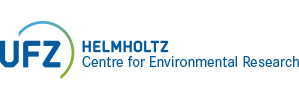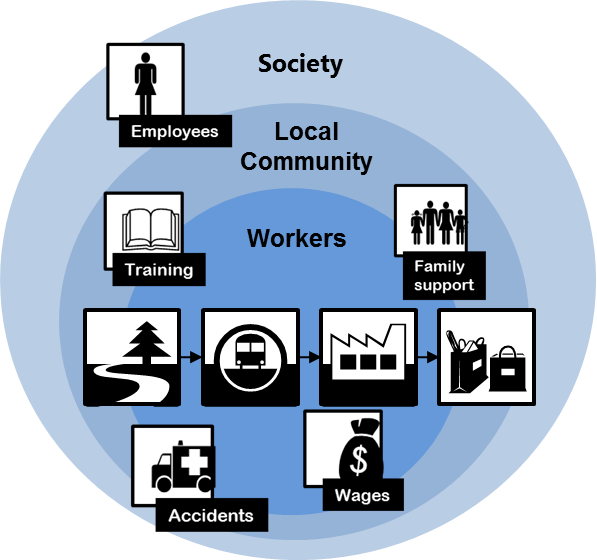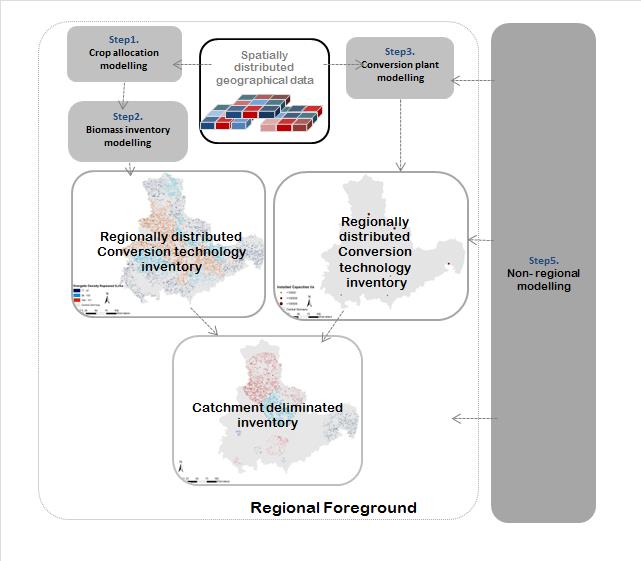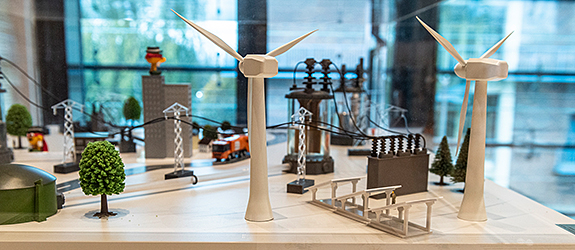Internal Collaboration Activities at UFZ: Bridging Social Sciences and Engineering
Welcome to our internal collaboration activities at UFZ. Our Department aims at bridging the gap between social sciences and engineering to drive innovative research and solutions. Our focus on interdisciplinary collaboration allows us to address complex challenges through a comprehensive and integrated approach. This website serves as a platform for sharing insights, strategizing, and showcasing the unique collaborations of the BEN department that contribute to the research landscape at UFZ.
Project description:
At UFZ, our collaboration activities aim to accelerate research on renewable energies and the novel utilization of renewable resources in bio-based technical concepts. We are dedicated to advancing innovative biorefinery approaches, ensuring our work not only contributes to sustainability but also drives practical applications. The work of the BEN department helps achieve the sustainability of these concepts through advanced modelling and assessment methodologies, comprehensively evaluating technical, economic, environmental and social impacts. We have established planetary boundaries and the SDGs as frameworks to assess the transformation processes in the energy and bioeconomy fields, ensuring our choices are data-driven and impactful. Additionally, we focus on the regulatory frameworks necessary for bioeconomy transformation, drawing from regional experiences to optimize the utilization of locally available resources.
Currently the following activities are active collaborations within UFZ:
In recent years, the integration of Life Cycle Assessment (LCA) at the early stages of process design has become increasingly important. This shift from traditional practices is driven by the need to understand the potential environmental impacts of technical concepts from their inception. Gate-to-gate LCA approaches have emerged as essential tools, providing crucial insights into the environmental implications of technical concepts during the process design phase. These insights enable stakeholders to identify and mitigate environmental hotspots early, fostering the development of more sustainable technologies.
Gate-to-gate LCA activities also pave the way for comprehensive life cycle approaches, informing decision-making as technologies progress towards commercial scale. This includes considerations of feedstock selection, market identification, and infrastructure planning. Recognizing the importance of life cycle thinking in regional decision-making, the BEN department developed the RESPONSA (REgional SPecific cONtextualised Social life cycle Assessment) and the HILCSA (Holistic and Integrated Life Cycle Sustainability Assessment) models. By using them it is intended to acquire a comprehensive view of sustainability assessments by integrating interdisciplinary approaches from engineering, economic modeling, and social sciences.
This collaboration between TB4 and TB6 aims at the evaluation of early-stage technologies being developed at UFZ using a toolbox of LCA methods. The project will optimize gate-to-gate process development and conduct holistic evaluations of prospective value chains. The LCA activities are designed to provide feedback to TB4 partners involved in technological development, and to acquire a common understanding of systems thinking to help accelerate innovation in the bioeconomy field.
At present, research into a tailored renewable power supply for electrobiorefineries is still uncharted scientific territory. It is therefore extremely attractive for interdisciplinary cooperation between the TB4 and TB6. The main research question is how to integrate renewable sources of electric energy into a bio-based circular economy landscape? This will be explored using the specific example of the most efficient and sustainable combined electrochemical/microbial CO2 conversion to chemicals in electrobiorefineries.
Based on informal collaborations that resulted in a first publication [Harnisch and Lehneis, 2023], we want to analyze how the power grids need to be changed for the transition to an electrified bio-based economy. Building on this joint paper, we now do an analysis of the status quo and necessary developments of a renewable power supply on the specific example of CO2-based electrobiorefineries. Such CO2-based electrobiorefineries couple electrochemical with biological processes to convert CO2 into value-added products using electrical energy. This integration harnesses the best of both processes, namely the high kinetics of electrochemical processes and the generation of a broad portfolio of products within biological processes, to utilize electrical energy and CO2 as substrates to produce valuable chemicals and feedstocks [Izadi and Harnisch, 2022]. Further, this activity on electric energy fluxes will lead to a clear synergy also with the already existing TB4-TB6-collaboration that only addressing C-fluxes.
In the first step, a tailored renewable power supply is being considered as an autarkic stand-alone grid solution with a PV system and buffer storage, which may later also be operated using wind energy [Lehneis and Thrän, 2023] or by using renewable surplus electricity. This can be achieved with this stand-alone grid and the resulting scientific findings will guide a future demand-driven power supply for an electrobiorefinery. In addition, this will be accompanied by an analysis of the engineering potential and the provision of feasible products, processes and their data on yields, titers, of the electrochemical/microbial reaction processes of an electrobiorefinery for this stand-alone grid solution. In order to obtain a reliable data base for a realistic power supply from a stand-alone grid using physical simulation models, it is essential to simulate the variable power generation of the PV system over a longer period of time, i.e. at least one full year, to capture also seasonal fluctuations at the (fictitiously) planned location of the electrobiorefinery. With the help of the simulation model developed at TB6 and using detailed plant and weather data, the electricity generation from a PV system can be calculated with high temporal resolution [Lehneis et al. 2020, 2022]. The comparison of the patterns of variable electricity generation from the PV system and the fluctuating electricity demand of an electrobiorefinery shows possible bottlenecks or unused overproduction in the autarkic stand-alone grid and thus helps to optimize the system design and the size of the buffer storage. Furthermore, these findings can also be used to adapt the electrochemical/microbial reaction processes of an electrobiorefinery very well to the energy conditions of such a stand-alone grid solution.
References:
Harnisch, F.; Lehneis, R. The power grids need to be made ready for a circular and bio-based economy. Next Sustainability 2023, 2, 100010. https://doi.org/10.1016/j.nxsust.2023.100010
Izadi, P; Harnisch, F. Microbial | electrochemical CO2 reduction: To integrate or not to integrate?. Joule, 2022, 6, 935 – 940. https://doi.org/10.1016/j.joule.2022.04.005
Lehneis, R.; Thrän, D. Temporally and Spatially Resolved Simulation of the Wind Power Generation in Germany. Energies 2023, 16, 3239. https://doi.org/10.3390/en16073239
Lehneis, R.; Manske, D.; Thrän, D. Generation of Spatiotemporally Resolved Power Production Data of PV Systems in Germany. ISPRS International Journal of Geo-Information 2020, 9, 621. https://doi.org/10.3390/ijgi9110621
Lehneis, R.; Manske, D.; Schinkel, B.; Thrän, D. Spatiotemporal Modeling of the Electricity Production from Variable Renewable Energies in Germany. ISPRS International Journal of Geo-Information 2022, 11, 90. https://doi.org/10.3390/ijgi11020090
The potential contribution of advanced biotechnologies to net zero production systems is analysed through modelling the competitiveness of selected biotechnologies (TB4) for the resource base in different bioeconomy scenarios for Germany until 2050. To analyse the contribution of advanced biotechnologies to a future net zero economy, researchers in TB6 model the competitiveness of selected biotechnologies (TB4) for the resource base in different bioeconomy scenarios for Germany until 2050. Modelling is performed with BENOPTex, which was initially developed to identify the future role of biomass/ bioenergy within the energy transition in various scenarios in Germany [Millinger et al., 2022; BENOPT].
The model is currently being extended to also depict the most important sectors of the bioeconomy. The challenge in modelling advanced biotechnologies with a low TRL is to predict when, at what cost and at which performance level the processes will be commercially available. One idea is to use bandwidths in different scenarios to find out under which conditions (costs/efficiency) these biotechnologies have market potential. The model results could therefore provide targets for the development of biotechnologies.
However, scenario modelling is necessary when looking at future techno-economic transformations. Consequently, to define scenarios for climate emission pathways and land use which are jointly assessed in TB4, TB5 and TB6, an expert bioeconomy workshop was held with participants from all over Germany. In groupworks and discussions drivers and narratives of the bioeconomy were weighted, prioritised and classified. As a result, there was a consensus that future bioeconomy scenarios should cover the following important but uncertain future developments of (1) consumption and final energy demand, (2) production and technological progress, and (3) the availability of biomass resources under the influence of climate change and dietary changes [Chan et al., 2022].
In addition to findings on biotechnology contributions, the model results should also add to the design of a regulatory framework for the bioeconomy and be harmonised with the Bioeconomy Council's recommendations for action [Bioökonomierat, 2023].
Team: Daniela Thrän (TB6) , Matthias Jordan (TB6) , Adrian Tüllinghoff (TB4/TB6) , Katja Bühler (TB4) , Hauke Harms (TB4) , Falk Harnisch (TB4) , Sabine Attinger (TB5) , Karin Frank (TB5)
References:
Millinger, M., Tafarte, P., Jordan, M., Musonda, F., Chan, K., Meisel, K., Esmaeili Aliabadi, D. (2022):
A model for cost- and greenhouse gas optimal material and energy allocation of biomass and hydrogen. SoftwareX 20 , art. 101264 10.1016/j.softx.2022.101264
Chan, K., Millinger, M., Schneider, U.A., Thrän, D. (2022): How diet portfolio shifts combined with land-based climate change mitigation strategies could reduce climate burdens in Germany
J. Clean Prod. 376 , art. 134200 https://doi.org/10.1016/j.jclepro.2022.134200
Bioökonomierat (2023): Bioökonomie nachhaltig umsetzen! Erste Handlungsempfehlungen des Bioökonomierats zur Umsetzung der Nationalen Bioökonomiestrategie, https://www.biooekonomierat.de/media/pdf/arbeitspapiere/2023-06-07_boer_erste_Handlungsempfehlungen_ Biooekonomie_nachhaltig_umsetzen_Langfassung.pdf?m=1702479108&
Project duration:
06/2024 bis 09/2025
Project lead:
Prof.-Dr.-Ing. Daniela Thrän
Tel.: +49 341 2434 435
Helmholtz-Zentrum für Umweltforschung GmbH - UFZ
Permoserstraße 15
04318 Leipzig



